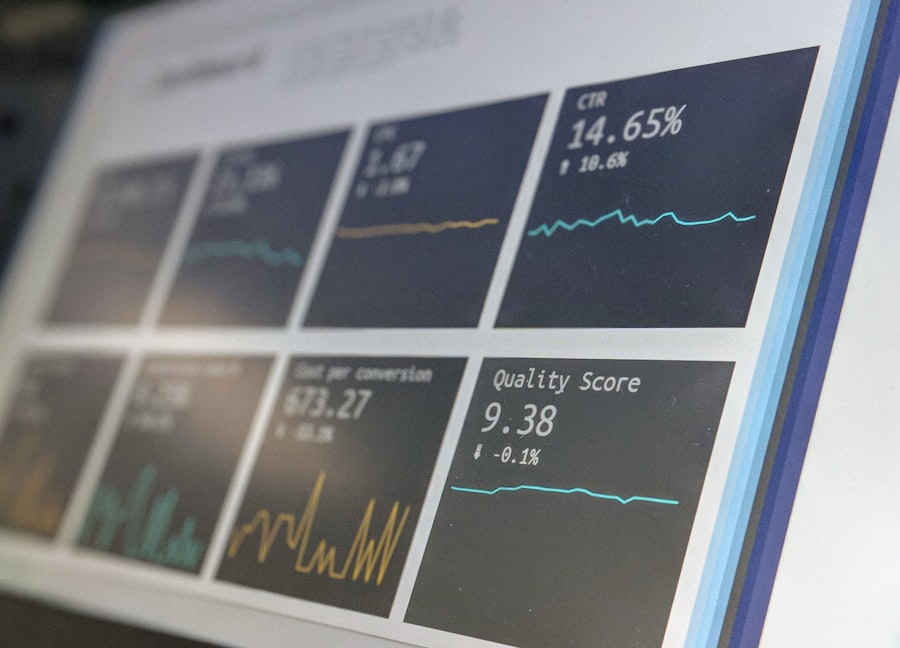In recent years, the banking landscape has undergone a significant transformation, primarily driven by the emergence of neobanks. These digital-first financial institutions have gained traction among consumers who seek more convenient, user-friendly, and cost-effective banking solutions. Unlike traditional banks, which often rely on physical branches and legacy systems, neobanks operate entirely online, leveraging technology to streamline operations and enhance customer experiences.
This shift has not only disrupted the conventional banking model but has also paved the way for a new era of financial services that prioritize accessibility and innovation. The rise of neobanks can be attributed to several factors, including the increasing penetration of smartphones, the growing demand for seamless digital experiences, and a generational shift in consumer preferences. Millennials and Gen Z, in particular, are more inclined to embrace technology-driven solutions that offer flexibility and transparency.
As these demographics become the primary consumers of financial services, neobanks have positioned themselves as attractive alternatives to traditional banking institutions. With their focus on user-centric design and agile service delivery, neobanks are redefining what it means to be a bank in the 21st century.
The Impact of Technology on Banking
Technology has fundamentally altered the way banking services are delivered and consumed. The advent of mobile banking applications, artificial intelligence (AI), and blockchain technology has enabled financial institutions to enhance their offerings and improve operational efficiency. For neobanks, technology is not just an enabler; it is the core of their business model.
By utilizing cloud computing, data analytics, and machine learning algorithms, neobanks can provide real-time insights into customer behavior, preferences, and financial health. One of the most significant impacts of technology on banking is the democratization of financial services. With the rise of digital platforms, consumers no longer need to visit a physical branch to open an account or apply for a loan.
Neobanks have capitalized on this trend by offering fully digital onboarding processes that require minimal documentation and can be completed in minutes. This shift not only enhances customer convenience but also reduces operational costs for banks, allowing them to pass on savings to consumers in the form of lower fees and better interest rates.
The Role of Neobanks in Financial Inclusion

Financial inclusion remains a pressing global challenge, with billions of people lacking access to basic banking services. Neobanks have emerged as powerful agents of change in this regard, leveraging technology to reach underserved populations and provide them with essential financial tools. By eliminating the need for physical branches and offering low-cost services, neobanks can cater to individuals who may have been excluded from traditional banking systems due to geographic or economic barriers.
For instance, neobanks often target gig economy workers, freelancers, and low-income individuals who may not have a stable income or a traditional credit history. By utilizing alternative data sources for credit scoring and risk assessment, neobanks can extend credit to those who would otherwise be deemed unbankable by traditional lenders. This approach not only empowers individuals with access to credit but also fosters economic growth by enabling them to invest in their businesses or manage unexpected expenses.
Neobanks and Personalized Financial Services
| Neobanks and Personalized Financial Services | Metrics |
|---|---|
| Customer Acquisition | Number of new customers acquired monthly |
| Customer Retention | Percentage of customers retained annually |
| Personalized Financial Products | Number of personalized products offered |
| Customer Satisfaction | Net Promoter Score (NPS) or Customer Satisfaction Index (CSI) |
| Mobile App Downloads | Number of downloads of the mobile banking app |
Personalization has become a key differentiator in the competitive landscape of financial services. Neobanks excel in delivering tailored experiences that resonate with individual customer needs and preferences. By harnessing data analytics and AI-driven insights, these digital banks can offer personalized product recommendations, budgeting tools, and financial advice that align with users’ unique financial situations.
For example, many neobanks provide users with real-time spending insights and categorization features that help them track their expenses more effectively. This level of personalization not only enhances user engagement but also fosters a sense of financial empowerment among customers. Additionally, some neobanks offer features such as automated savings tools that analyze spending patterns and suggest optimal savings strategies based on individual goals.
This proactive approach to financial management is particularly appealing to younger consumers who seek guidance in navigating their financial journeys.
The Evolution of Neobank Business Models
The business models of neobanks have evolved significantly since their inception. Initially, many neobanks operated on a freemium model, offering basic banking services for free while charging fees for premium features or services. However, as competition intensified and consumer expectations grew, neobanks began diversifying their revenue streams to ensure sustainability.
Today, many neobanks generate revenue through partnerships with third-party service providers, such as insurance companies or investment platforms. By offering integrated services within their apps, neobanks can create additional value for customers while earning referral fees or commissions. Furthermore, some neobanks have started exploring subscription-based models that provide users with enhanced features for a monthly fee.
This evolution reflects a broader trend in the fintech industry toward creating holistic financial ecosystems that cater to diverse customer needs.
Regulatory Challenges and Opportunities for Neobanks

As neobanks continue to disrupt the traditional banking sector, they face a complex regulatory landscape that varies significantly across jurisdictions. While some countries have embraced fintech innovation by creating regulatory sandboxes that allow neobanks to test their products in a controlled environment, others have imposed stringent regulations that can stifle growth and innovation. Navigating these regulatory challenges presents both risks and opportunities for neobanks.
On one hand, compliance with regulations such as anti-money laundering (AML) and know your customer (KYC) requirements can be resource-intensive and may hinder agility. On the other hand, proactive engagement with regulators can lead to favorable outcomes that foster innovation while ensuring consumer protection. For instance, some neobanks have successfully collaborated with regulators to develop frameworks that promote responsible lending practices while allowing them to leverage alternative data for credit assessments.
Collaboration between Neobanks and Traditional Banks
Rather than viewing each other as direct competitors, many neobanks are recognizing the potential for collaboration with traditional banks. This shift in perspective is driven by the understanding that both types of institutions can benefit from each other’s strengths. Traditional banks possess established customer bases, regulatory expertise, and extensive resources, while neobanks bring agility, innovation, and a deep understanding of digital consumer behavior.
Collaborative initiatives can take various forms, such as partnerships for co-branded products or technology integrations that enhance service offerings. For example, some traditional banks have partnered with neobanks to launch digital-only accounts aimed at younger consumers who prefer mobile banking solutions. These collaborations allow traditional banks to tap into new customer segments while providing neobanks with access to established infrastructure and compliance frameworks.
The Future of Banking: Neobanks Leading the Way
As we look ahead to the future of banking, it is clear that neobanks are poised to play a pivotal role in shaping the industry landscape. Their ability to adapt quickly to changing consumer preferences and technological advancements positions them as leaders in innovation within the financial sector. As more consumers embrace digital banking solutions, neobanks will continue to refine their offerings and expand their reach.
Moreover, the ongoing evolution of technologies such as artificial intelligence, machine learning, and blockchain will further empower neobanks to enhance their services and create new value propositions for customers. As they continue to prioritize financial inclusion and personalized experiences, neobanks will likely drive significant changes in how financial services are delivered globally. In conclusion, the rise of neobanks represents a fundamental shift in the banking industry characterized by technological innovation, enhanced accessibility, and personalized service delivery.
As they navigate regulatory challenges and explore collaborative opportunities with traditional banks, neobanks are well-positioned to lead the way into a new era of banking that prioritizes customer-centricity and inclusivity.
FAQs
What are neobanks?
Neobanks are digital-only banks that operate exclusively online without any physical branches. They offer banking services such as savings accounts, checking accounts, and loans through mobile apps and websites.
How are neobanks redefining traditional banking?
Neobanks are redefining traditional banking by offering a more convenient and user-friendly banking experience. They often have lower fees, higher interest rates on savings accounts, and innovative features such as budgeting tools and real-time transaction notifications.
What are the advantages of using a neobank?
Some advantages of using a neobank include 24/7 access to banking services, lower fees, higher interest rates on savings accounts, and innovative digital features that make managing finances easier.
Are neobanks safe to use?
Neobanks are regulated financial institutions and are required to adhere to the same security and privacy standards as traditional banks. They use encryption and other security measures to protect customer data and transactions.
How are traditional banks responding to the rise of neobanks?
Traditional banks are responding to the rise of neobanks by investing in their own digital banking platforms and mobile apps. They are also partnering with fintech companies to offer innovative digital services to compete with neobanks.









